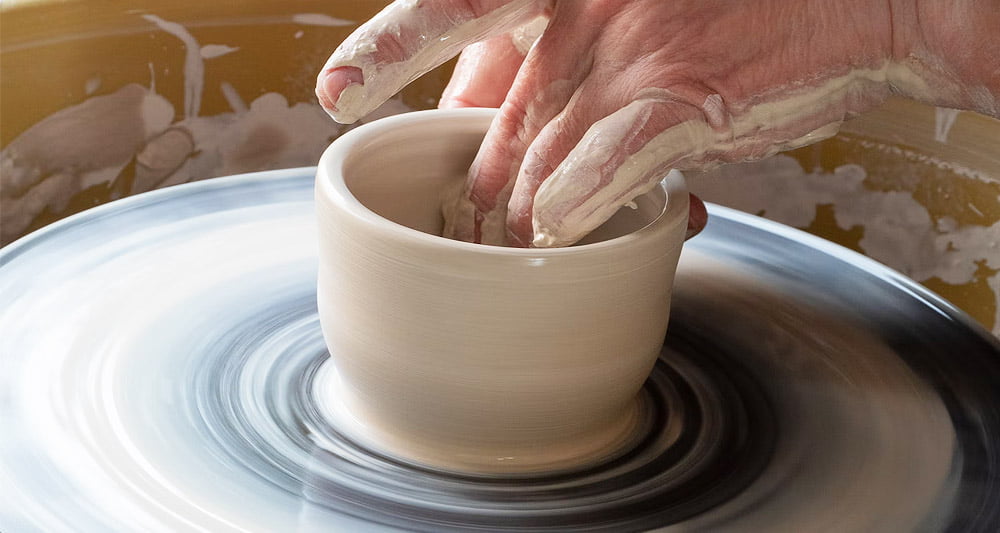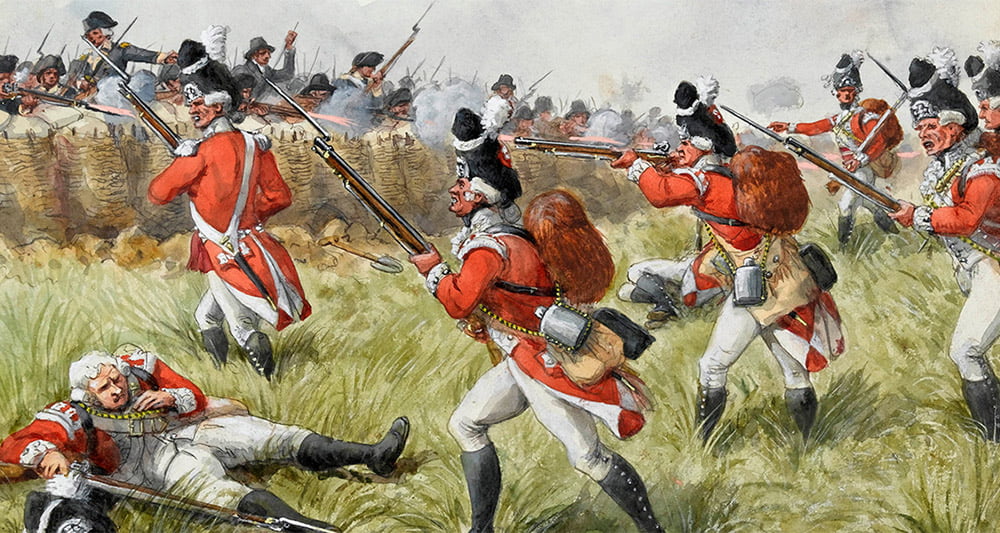10 Arts & Crafts Revivals and Their Cultural Significance

Arts & Crafts Revivals refer to the resurgence of traditional arts and crafts techniques and styles. These revivals often stem from a desire to reconnect with the past and preserve cultural heritage, as well as provide an outlet for creativity and self-expression.
What is the cultural significance of arts & crafts revivals?
Arts & Crafts Revivals play a significant role in shaping culture by preserving cultural heritage, encouraging creativity, revitalizing communities, and boosting local economies. These revivals offer a glimpse into the history and traditions of a community, preserving their unique identities and allowing them to pass on their knowledge to future generations.
How does the revival of traditional arts & crafts preserve cultural heritage?
Arts & Crafts Revivals play a crucial role in preserving cultural heritage by offering a glimpse into the history and traditions of a community. By reviving traditional techniques and styles, individuals can learn about and connect with their cultural heritage, helping to preserve it for future generations.
How do revived arts & crafts encourage creativity?
Revived arts & crafts provide an outlet for creativity and self-expression. By learning traditional techniques and styles, individuals can develop their own voice and style, leading to new and innovative interpretations of traditional forms.
How does the revival of lost arts & crafts revitalize communities?
Arts & Crafts Revivals bring people together and provide opportunities for individuals to share skills, knowledge, and resources. This leads to a sense of community, a shared sense of identity, and a stronger sense of belonging, revitalizing communities in the process.
How does this boost local economies?
Reviving lost arts & crafts can also have a positive impact on local economies. By revitalizing traditional industries and creating new markets for handmade goods, these revivals provide economic opportunities for individuals and communities, boosting local economies in the process.
Ready to dive deeper into the fascinating world of arts & crafts revivals? Our comprehensive list of 10 Arts & Crafts Revivals and Their Cultural Significance offers a wealth of information on the subject, from traditional techniques and styles to their cultural significance and impact on communities. Don’t miss this exciting opportunity to broaden your knowledge and understanding of this important aspect of culture and heritage. Explore our list now!
- Calligraphy
- Blacksmithing
- Weaving
- Wood carving
- Pottery
- Glassblowing
- Knitting and Crochet
- Printmaking
- Paper crafts
- Bookbinding
1 Calligraphy

Calligraphy values the aesthetic beauty of letters and writing. It creates decorative lettering and designs with special pens, inks, and surfaces. In recent years, individuals seek to reconnect with this traditional art form through arts & crafts revivals and appreciate its beauty.
Calligraphy holds a historical importance in the history of art and writing, as well as in cultural heritage. It has created beautiful works of art and preserved cultural traditions and stories for centuries. The revival of calligraphy preserves cultural heritage and allows individuals to connect with their roots. They experience the beauty of this ancient art form and understand its cultural significance. The revival of calligraphy also passes the cultural significance of this traditional art form to future generations.
2 Blacksmithing

Blacksmithing is the ancient art of shaping metal with fire and a hammer. It involves the creation of iron and steel tools, decorative objects, and functional pieces of metalwork. In recent years, blacksmithing has experienced a revival. People rediscover traditional techniques and appreciate the skill and craftsmanship involved.
Blacksmithing holds a cultural significance and historical importance. It played a role in the development of civilizations by creating weapons, tools, and structures. This revival has helped preserve this cultural heritage and bring new life to the ancient art form.
Individuals can experience the beauty and skill in blacksmithing through its revival. It offers a unique form of expression that combines creativity with technical skill. This revival connects people with their heritage and inspires a new generation to learn this ancient art form. By preserving traditional techniques, blacksmithing continues to have a cultural significance in human life.
3 Weaving

Weaving involves interlacing threads or yarns to make cloth and fabric. A traditional and ancient art form, it has been practiced worldwide for thousands of years. Recently, people have rediscovered the beauty and versatility of weaving and sparked a revival of this art form.
Weaving holds cultural significance, with various weaving techniques and styles developed throughout history. It has a historical importance, playing a crucial role in creating clothing, textiles, and other functional and decorative objects. The revival of weaving preserves cultural heritage, passing on the knowledge and skills of this ancient art form to future generations.
Weaving connects people to their heritage and traditions, inspiring them to appreciate and preserve traditional techniques. The cultural significance of weaving lies in its ability to encourage individuals to explore their personal and cultural identities through this art form. Whether creating textiles, patterns, or functional items, weaving offers a unique form of expression that combines creativity and technical skill. The revival of weaving allows individuals to experience the beauty and skill involved in this traditional art form.
4 Wood carving

Wood carving is the active process of shaping and sculpting wood into decorative or functional objects. It’s an ancient art form that has been practiced for thousands of years and has recently experienced a revival in popularity. People appreciate the beauty and versatility of this traditional art form.
Wood carving holds cultural significance and has played a historical role in the creation of furniture, architectural elements, and decorative objects. Many different carving styles and techniques have developed over the centuries and the revival of wood carving helps to preserve this cultural heritage by passing on the knowledge and skills involved to future generations.
Through the arts & crafts revival of wood carving, individuals can experience the beauty and skill involved in this traditional art form. They can also create their own works of art that reflect their own cultural and personal identities. Wood carving offers a unique form of expression that combines creativity with technical skill. By connecting people with their heritage and traditions, wood carving encourages them to appreciate and preserve traditional techniques and styles.
5 Pottery

Pottery is an art that involves shaping and firing clay into decorative and functional objects. The revival of pottery in recent years highlights the appreciation and versatility of this ancient art form that has been practiced for thousands of years.
Pottery holds cultural significance as it is an integral part of cultural heritage. Different styles and techniques of pottery have been developed over the centuries. They have played an important role in creating functional objects such as dishes, vases, and storage containers. They have also contributed to the creation of decorative pieces like sculptures and ornaments. The revival of pottery has played a key role in preserving cultural heritage and passing on the knowledge and skills involved in this ancient art form to future generations.
The arts & crafts revivals bring cultural significance to pottery by connecting individuals with their heritage and traditions. By encouraging appreciation and preservation of traditional techniques and styles, pottery fosters a connection with cultural heritage. Through the revival of pottery, individuals can experience the beauty and skill involved in this traditional art form and create their own works of art that reflect their cultural and personal identities. Pottery combines creativity with technical skill to offer a unique form of expression.
6 Glassblowing

Glassblowing is a form of glass art that involves inflating molten glass into a bubble, shaping it into a desired form, and then cooling it. It is an ancient art form that has been practiced for centuries and has experienced a revival in recent years. Glassblowing artists create a wide range of objects including vases, bowls, sculptures, and other decorative pieces. They are highly skilled and work with a team to turn molten glass into beautiful and intricate works of art.
People appreciate the unique qualities of hand-blown glass, including its imperfections and variations that make each piece one-of-a-kind. Glassblowing workshops and classes allow people to experience the art form and create their own glass art.
Glassblowing holds significance in cultural heritage. It has been used for centuries to create functional and decorative objects. It played a role in the development of cultures and civilizations. Today, the cultural significance of glassblowing connects people with their heritage and traditions. It encourages appreciation and preservation of traditional techniques and styles. Glassblowing offers a unique form of expression combining creativity and technical skill.
7 Knitting and Crochet

Knitting and crocheting have a long history, passed down through generations. They have recently seen a revival with the rise of DIY culture and interest in sustainable products. People enjoy creating things with their own hands, and these techniques allow them to express creativity and personal style. Whether it’s a scarf, blanket, or toy, the possibilities are endless. Knitting and crocheting can also be true works of art, with intricate patterns and designs.
The arts & crafts revival has led to the revival of heritage, as traditional techniques such as knitting and crocheting are preserved. These techniques hold a cultural significance, reflecting the values and traditions of different cultures. They have been used to create functional and decorative objects, such as clothing, accessories, and home decor, with practical and symbolic meanings. The revival of crafts helps pass on the knowledge and skills to future generations.
Not only do knitting and crocheting preserve heritage, but they also have therapeutic benefits. They help relieve stress and improve mental health through the repetition of stitches and the creative process. Knitters and crocheters can connect with their heritage and traditions, finding a sense of community and belonging. Knitting and crocheting offer a unique form of expression, combining creativity, tradition, and craftsmanship.
8 Printmaking

Printmaking is an age-old art form that involves creating original prints from a matrix or plate. It includes techniques such as relief printing, intaglio printing, lithography, and screen printing. With the rise of digital technology and mass production, printmaking faced a decline. However, in recent years, it has experienced a revival, with a renewed appreciation for traditional printing methods and the unique qualities of hand-made prints.
Printmaking offers a versatile and accessible way for artists to express themselves, with the ability to produce multiple, original prints from a single plate. Each print is unique, with its own character and variations, making it a sought-after art form. The process of printmaking also allows for a wide range of techniques and styles, providing artists with endless creative possibilities.
Printmaking holds great cultural significance, reflecting the values, beliefs, and traditions of different cultures. From political propaganda to religious images, printmaking has been used to communicate ideas and messages, playing a vital role in shaping cultural heritage and history. The revival of printmaking helps to preserve this cultural heritage, with artists and printmakers using traditional techniques to create new works that reflect contemporary issues and perspectives.
In addition to preserving cultural heritage, printmaking also offers therapeutic benefits. The repetition of the printing process, the satisfaction of creating a unique work of art, and the focus on the task at hand can all help to relieve stress and improve mental health. The revival of printmaking is a testament to the enduring appeal and value of this art form, which continues to captivate and inspire new generations of artists and audiences alike.
9 Paper crafts

Paper crafts have seen a resurgence in recent years, with many people discovering the joy of creating beautiful and intricate works of art from simple sheets of paper. From origami to paper cutting, paper crafts offer a variety of techniques and styles to explore, making it a versatile medium for artists and crafters of all ages and skill levels.
These techniques not only allow individuals to express their creativity but also have therapeutic benefits. The process of crafting with paper, whether it be through cutting, folding, or sculpting, can help relieve stress and improve mental well-being.
Paper crafts have a rich cultural significance, with different techniques and styles reflecting the values and traditions of different cultures. In many countries, paper cutting is an important folk art that is passed down from generation to generation, representing a vital part of cultural heritage.
The revival of paper crafts is not only preserving this cultural heritage but also encouraging a new generation to connect with their traditions and heritage. It also promotes sustainability, as the paper is a readily available and renewable material, making it an accessible and eco-friendly option for crafting.
In conclusion, paper crafts offer a unique form of expression that brings together creativity, tradition, and craftsmanship, making it a meaningful and engaging hobby for individuals to enjoy.
10 Bookbinding

Bookbinding is an ancient craft that involves the creation of books. From hand-sewn manuscripts to mass-produced hardcovers, bookbinding has been a crucial part of the bookmaking process for centuries. The revival of traditional bookbinding techniques and the rise of independent bookbinding studios have brought this craft back into the spotlight.
Craftspeople use various methods to bind books, including stitching, glueing, and casing-in. Each method has its own unique look and feel, and skilled bookbinders can create truly beautiful and functional works of art. The revival of bookbinding allows individuals to connect with traditional techniques and to create their own unique and personal books.
Bookbinding holds significant cultural significance, reflecting the values and traditions of different cultures. Bookbinding has a rich history that dates back to medieval times. It has been used to create illuminated manuscripts, artist’s books and more. The art of bookbinding has always been a way to express creativity, commemorate important events and preserve knowledge.
Recently, there has been a revival of interest in bookbinding, which is helping to preserve this cultural heritage. People are eager to learn the techniques and skills involved, ensuring that this tradition is passed down to future generations. This revival highlights the importance of preserving cultural heritage and the value of traditional crafts.
In addition to preserving cultural heritage, bookbinding also has therapeutic benefits, helping individuals to relieve stress and improve mental health. Through the repetition of the binding process and the creative process of design, individuals can connect with their heritage and traditions, and find a sense of community and belonging. Bookbinding offers a unique form of expression, bringing together creativity, tradition, and craftsmanship.
Conclusion:
From embroidery to wood carving, these arts and crafts revivals serve as reminders of our cultural heritage and creativity. By learning these traditional techniques and incorporating them into our modern lives, we can not only preserve their legacy, but also benefit from the therapeutic effects and self-expression they offer. By sharing these skills with others and supporting artists who practice these revivals, we can help to ensure their continuation for generations to come. Let us celebrate and preserve our artistic heritage by embracing these revivals.













